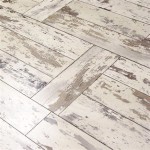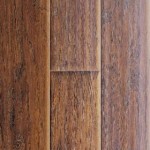Choosing the Direction of Laminate Flooring: A Comprehensive Guide
Laminate flooring is a versatile and durable flooring option that can enhance the aesthetics of any room. One crucial decision when installing laminate flooring is determining the direction in which the planks will be laid. While it may seem like a minor detail, the direction of the planks can significantly impact the overall appearance and feel of a space. Here are some essential aspects to consider when choosing the direction of laminate flooring.
1. Room Shape and Size
The shape and size of the room play a significant role in determining the optimal direction for laminate flooring. For narrow or elongated rooms, installing the planks parallel to the longest wall can create an illusion of width and make the space feel more spacious. In contrast, for wider rooms, laying the planks perpendicular to the longest wall can help break up the space and create a more intimate atmosphere.
2. Natural Light Direction
The direction of natural light entering a room can also influence the choice of laminate flooring direction. When sunlight falls parallel to the planks, it can highlight the grain pattern and create a more defined look. On the other hand, installing the planks perpendicular to the light source can minimize the visibility of the grain and create a more uniform appearance.
3. Traffic Flow and Function
Consider the traffic flow and function of the room when choosing the direction of laminate flooring. In high-traffic areas, such as hallways or entryways, installing the planks parallel to the direction of foot traffic can help minimize wear and tear. For rooms intended for relaxation or entertainment, laying the planks perpendicular to the traffic flow can create a more cozy and relaxing atmosphere.
4. Furniture Placement
The placement of furniture and other objects in the room can also guide the choice of laminate flooring direction. If the room has a central focal point, such as a fireplace or a large window, installing the planks radially around that point can create a sense of symmetry and balance. Alternatively, if the furniture is arranged in a specific pattern, aligning the planks parallel to the furniture lines can enhance the overall design.
5. Architectural Features
Pay attention to any architectural features in the room, such as built-in shelves, molding, or exposed beams. Installing the laminate flooring in a direction that complements these features can help create a harmonious and cohesive look. For example, if the room has a bay window with angular lines, laying the planks diagonally can accentuate the architectural detail.
Choosing the direction of laminate flooring is a crucial step that can significantly affect the overall appearance and feel of a space. By considering the room shape and size, natural light direction, traffic flow, furniture placement, and architectural features, you can make an informed decision that will enhance the aesthetics and functionality of your room.

Determining The Direction To Lay Install Hardwood Laminate Or Luxury Vinyl Plank Flooring

Best Direction To Lay Laminate Flooring Make Your Floor Stand Out April 2024

Tips From The Table Laying Your Floor

Choosing Which Direction To Lay Vinyl Plank Flooring Install Today Reallyfloors America S Est Hardwood

Flooring Direction Which Way Is Best Garrison Collection

Which Direction Should Home Owners Install Vinyl Plank Flooring

Which Direction Do You Lay Vinyl Plank Flooring Google Search Laying Laminate Installing

Which Direction To Lay Vinyl Plank Flooring Simple Company

What Is The Best Direction To Install My Floor

How To Choose Which Direction Lay Vinyl Plank Flooring Fox Mountain Property Inspection
Related Posts








